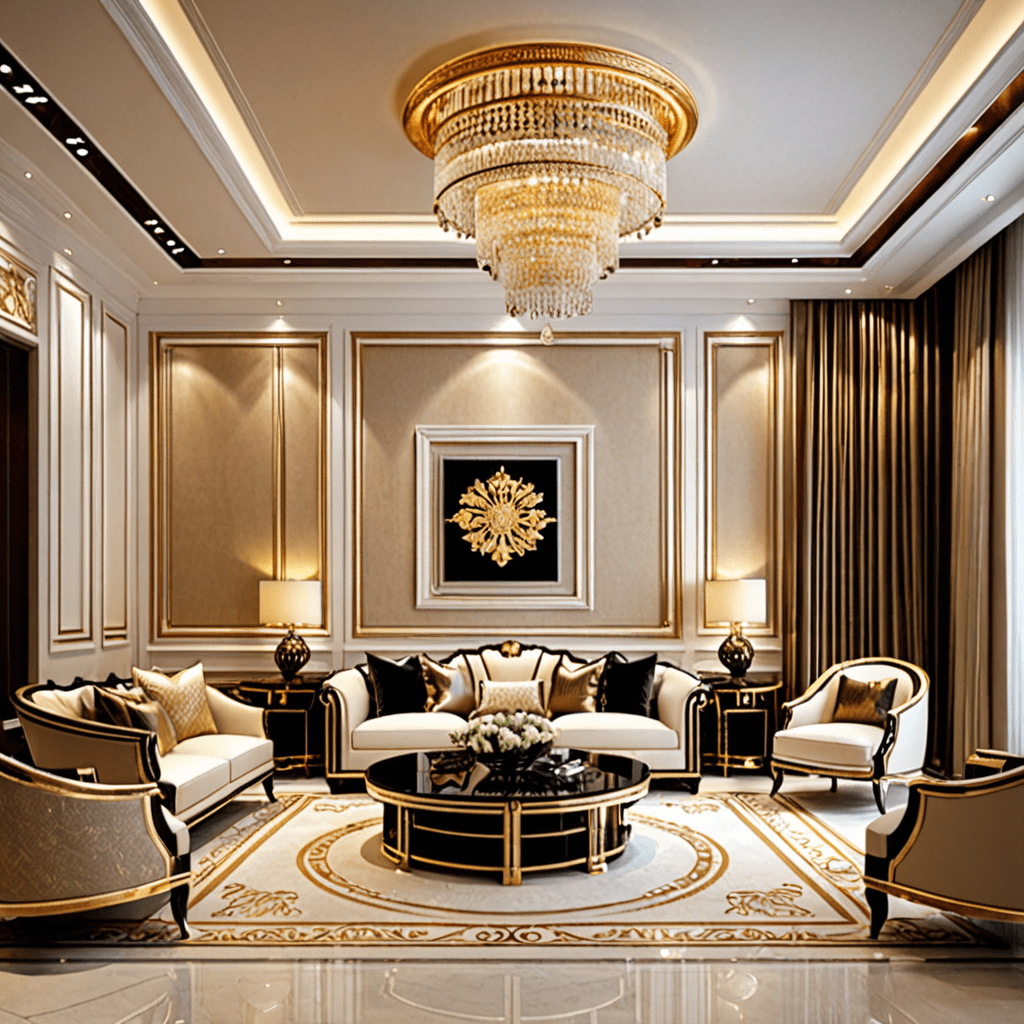Best Home Theater Acoustics – How to Achieve the Perfect Sound
Introduction to Home Theater Acoustics
When it comes to creating the ultimate home theater experience, interior design is not just about aesthetics; it’s also about acoustics. The way sound behaves and interacts within a space can greatly affect the overall quality of your movie-watching or music-listening experience. Home theater acoustics focuses on optimizing the sound within a room to create a comfortable and immersive audio environment. In this article, we will explore the key elements of home theater acoustics and provide practical tips to help you achieve the perfect sound in your home theater setup.
Key Elements of Home Theater Acoustics
To understand how to optimize the acoustics in your home theater, it’s important to be aware of the key elements that contribute to the overall sound quality. Here are some essential elements to consider:
1. Room Layout and Size
The size and layout of your room play a significant role in how sound travels and interacts with the space. A larger room with high ceilings may produce more reverberation, while a smaller room with low ceilings may result in a more intimate sound. Understanding the characteristics of your room will help you make informed decisions about speaker placement and acoustic treatments.
2. Speaker Placement
Proper speaker placement is crucial for achieving balanced and accurate sound reproduction. The positioning of your speakers should consider factors such as the listening position, room dimensions, and recommended speaker angles. Experimenting with different speaker placements can significantly impact the overall soundstage and imaging.
3. Acoustic Treatments
Acoustic treatments are designed to control the reflections and reverberations within a room. These treatments include materials such as acoustic panels, bass traps, diffusers, and sound-absorbing curtains. By strategically placing these treatments in your home theater, you can reduce unwanted echoes, improve clarity, and enhance the overall sound quality.
4. Soundproofing
Soundproofing is essential in home theaters to prevent sound leakage and external noise interference. This can be achieved through proper insulation, double-glazed windows, and the use of soundproofing materials on walls and ceilings. By minimizing external disturbances, you can fully immerse yourself in the movie or music without any distractions.
5. Calibration and EQ
Calibration and equalization are the final steps in optimizing the acoustics of your home theater. Using a calibration microphone and a sound meter, you can measure and adjust the sound output of your speakers to ensure accurate and balanced audio reproduction. Room correction software and equalizers can also help fine-tune the frequency response for a more pleasing listening experience.
Tips for Home Theater Acoustics
Now that you are familiar with the key elements of home theater acoustics, let’s delve into some practical tips to help you achieve the best sound in your home theater setup.
1. Choose the Right Room
If you have the luxury of selecting a dedicated room for your home theater, choose one that has dimensions and features that are conducive to good acoustics. Avoid rooms with irregular shapes, large windows, or open spaces that can introduce unwanted reflections and reverberations.
2. Invest in Quality Speakers
The quality of your speakers greatly affects the overall sound performance. It’s worth investing in speakers that are specifically designed for home theaters and offer a balanced frequency response. Consider factors such as driver size, power handling, and the compatibility of your speakers with your AV receiver.
3. Optimize Speaker Placement
Experiment with different speaker placements to find the sweet spot that provides optimal soundstage and imaging. Follow guidelines provided by speaker manufacturers regarding the recommended distances from walls, corners, and the listening position. Additionally, consider using speaker stands or wall mounts for better positioning.
4. Use Acoustic Treatments
Strategically place acoustic panels, bass traps, and diffusers to control reflections and absorption in your home theater. Focus on areas where sound reflections are most prominent, such as the side walls, ceiling, and rear wall. Experiment with different configurations to find the right balance of absorption and diffusion.
5. Consider Sound Isolation
To minimize sound leakage and external noise interference, consider soundproofing your home theater. Use insulation materials within walls and ceiling, install double-glazed windows, and seal any gaps or openings. Additionally, choose soundproof doors or add door seals to further enhance sound isolation.
6. Optimize Subwoofer Placement
Proper subwoofer placement can greatly enhance the low-frequency response in your home theater. Experiment with different locations to find the spot that provides a smooth and even bass response. Avoid placing the subwoofer in corners or against walls, as this can result in boomy or uneven bass.
7. Calibrate and Fine-Tune
Utilize calibration tools and software to measure and adjust the sound output of your speakers. Follow the instructions provided by your AV receiver or home theater processor to ensure accurate speaker levels, distance settings, and room EQ optimization. Periodically re-calibrate your system as the room acoustics may change over time.
FAQ about Home Theater Acoustics
Question 1: How important are room dimensions for home theater acoustics?
– Answer: Room dimensions play a significant role as they affect the way sound travels and interacts within the space. Irregularly shaped rooms or dimensions that result in standing waves can introduce acoustic issues and affect sound quality.
Question 2: Can I use regular furniture in my home theater setup?
– Answer: While regular furniture can be used, certain considerations should be made for optimal sound performance. Avoid furniture that reflects or absorbs sound excessively, and consider using acoustically transparent materials for speaker covers or incorporating furniture with built-in acoustic treatments.
Question 3: How do I balance the sound in my home theater?
– Answer: Proper speaker placement, calibration, and EQ are key to achieving a balanced sound. Experiment with positioning your speakers, use calibration tools to measure and adjust levels, distances, and optimize equalization settings to achieve a well-balanced audio experience.
Question 4: Can I achieve good acoustics in a small room?
– Answer: Yes, good acoustics can be achieved in small rooms by carefully selecting appropriate speakers, optimizing speaker placement, using acoustic treatments to control reflections, and fine-tuning the sound through calibration and EQ.
Question 5: How much does acoustics affect the overall home theater experience?
– Answer: Acoustics play a crucial role in the overall home theater experience. Optimizing the acoustics can enhance sound clarity, imaging, and immersion, allowing you to fully enjoy your movies and music in a comfortable and immersive audio environment.
In conclusion, understanding the key elements of home theater acoustics and implementing practical tips can greatly enhance the sound quality and overall enjoyment of your home theater setup. From room layout and speaker placement to the use of acoustic treatments and fine-tuning, taking the time to optimize the acoustics will ensure a truly immersive audio experience. So sit back, relax, and enjoy the perfect sound in your home theater.





